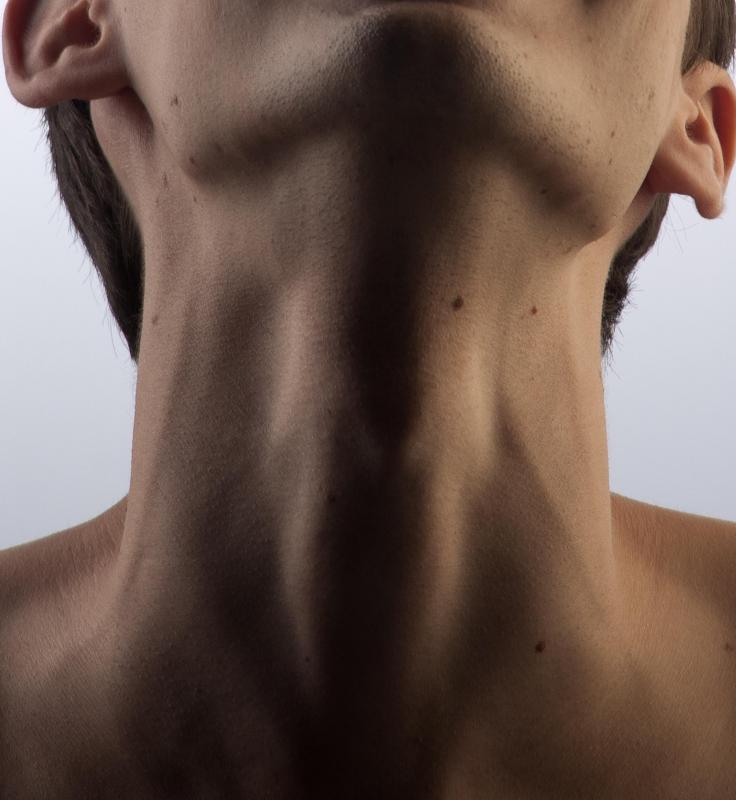At TheHealthBoard, we're committed to delivering accurate, trustworthy information. Our expert-authored content is rigorously fact-checked and sourced from credible authorities. Discover how we uphold the highest standards in providing you with reliable knowledge.
What Is the Vocal Muscle?
The vocal muscle is a muscle that lies adjacent to the vocal cords within the thyroid cartilage in the larynx, or voicebox. Also known as the vocalis, it is sometimes grouped among the topmost fibers of the thyroarytenoid muscle. The thyroarytenoid adducts the vocal cords when speaking, meaning that it pulls the front and back sides of the ring of thyroid cartilage closer together, shortening the space spanned by the vocal cords and allowing them to relax. This muscular contraction by the thyroarytenoid and in turn the vocal muscle produces variations in the tone of one’s voice.
At the back of the throat, or pharynx, two passageways arise: the esophagus, which leads to the stomach, and the trachea, which leads to the lungs. Within the trachea, or windpipe, is a hollow cylindrical tower comprising nine stacked ring-shaped segments of cartilage and referred to as the laryngeal skeleton. Extending from the hyoid bone at the base of the skull to the sixth cervical vertebra, the laryngeal skeleton and the tissues within form the larynx, the organ that makes speaking and singing possible.

Inside the larynx’s largest segment, that of the thyroid cartilage, are the most important tissues of phonation. The thyroid cartilage, whose prominent front margin is visible as the Adam’s apple, forms an irregular ring with a front border that tips outward as it ascends like the mouth of a water pitcher, so that the upper front margin of the cartilage is pointed like the letter V. From the interior wall of the front border of the thyroid cartilage, on either side of the depression formed by this V, arises the thyroarytenoid muscle.

The highest fibers of the thyroarytenoid muscle, those closest to the upper margin of the thyroid cartilage, belong to the vocal muscle. They stretch posteriorly across the cartilage’s interior space — a portion of the trachea — alongside the vocal folds, also known as the vocal cords. As both the muscle and the vocal folds are paired structures, there is one of each spanning either side of the thyroid cartilage. The vocal folds are on the inside, stretching across the trachea like two taut guitar strings, and the vocal muscle is situated immediately to either side of these.
From the interior margin of the rear aspect of the thyroid cartilage arise a pair of curved horns called the arytenoid cartilage. The vocal cords, the vocal muscle, and the thyroarytenoid muscle all attach to the arytenoid cartilage on the back side of the larynx. Just as the strings of a guitar produce sound by vibrating over a hollow in the instrument, the vocal folds do so by vibrating over the trachea as air is exhaled from the lungs. Instead of the fingers creating these vibrations, however, the muscles of the voicebox do so, with the vocal muscle as well as the thyroarytenoid drawing the thyroid and arytenoid cartilages toward one another to slacken the vocal folds. The tension allowed by these muscles informs the tone of the sounds passing through the larynx.
AS FEATURED ON:
AS FEATURED ON:












Discuss this Article
Post your comments